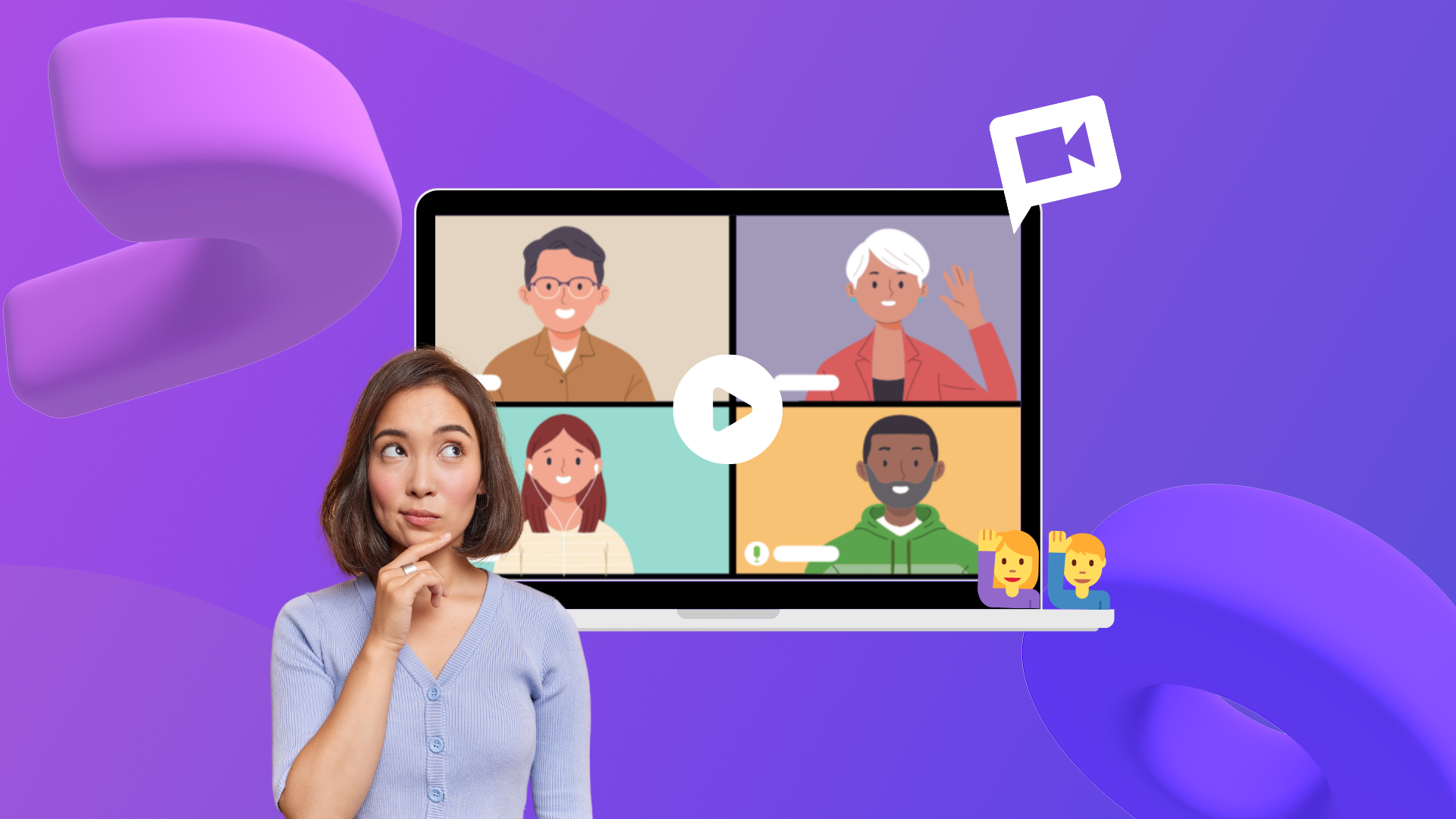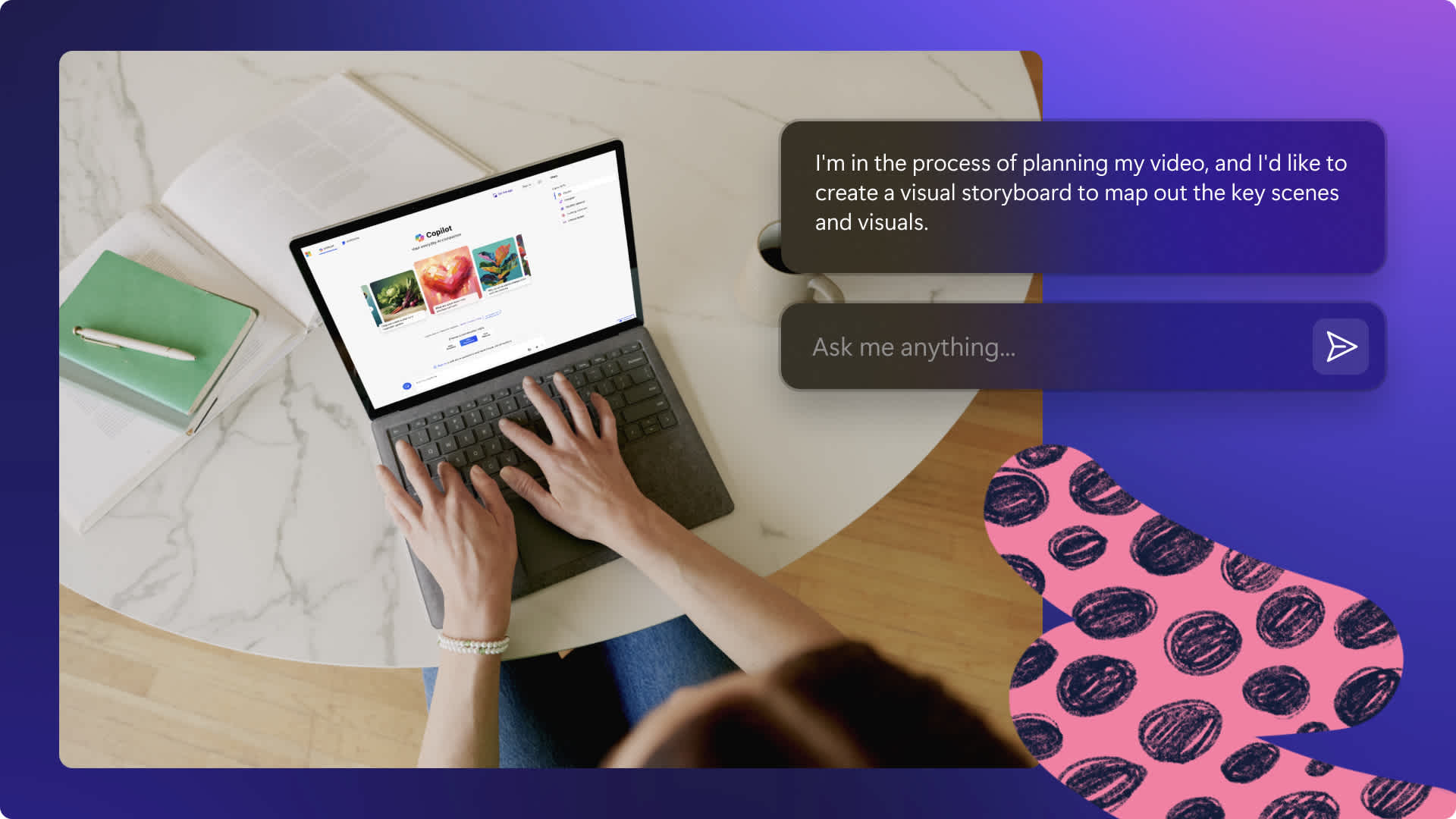Heads up! This content is relevant for Clipchamp for personal accounts. Try this link If you're looking for information about Clipchamp for work accounts.
On this page
Looking for creative ways to use video when onboarding new hires? Welcoming new employees is an exciting time for businesses, but in some cases, new team members aren’t able to be there in person. Whether they’re permanently working remotely, or temporarily from home, it’s essential to master the art of remote onboarding videos and training videos. Not only is it great for employees, but it also benefits businesses too. Great employee onboarding can improve employee retention by 82%.

Read on to explore the benefits of onboarding training videos, and unique ways your business can create HR videos with Clipchamp’s free online training video maker.
How your business can benefit from video onboarding
Most of the time, starting a new job requires a lot of paperwork. But with remote work becoming a more popular option for employees, traditional onboarding documents may not be the most efficient and effective of enrollment.
So how do you make this transition process a lot faster and easier? Through onboarding and training videos. Video is an essential part of any business's training and onboarding process. They’re engaging, customizable, time-efficient, facilitate genuine connections, and can help new starters learn faster from absolutely anywhere. Viewers retain 95% of a message through video compared to just 10% through text. Employees are free to learn at their own pace, write down any questions they may have, and refer back to the video as many times as they need.
Remote employee onboarding and training video ideas
Let’s take a look at easy ways any business can incorporate training videos into their onboarding process using Clipchamp.
1. Personalized welcome messages
While your remote new employee is sure to meet colleagues via video conferences and online chats, sending a personalized video message before they start can help ease their first-day nerves. A short 2 minute or less welcome video message can be created by the HR team, one of the business founders, or even the head of the department. These HR videos can be created, edited, and shared through email or social media directly via Clipchamp.
2. Vision and mission
New employees are usually made aware of the businesses’ vision and mission, and how their role fits into this before starting. Instead of sending through a lengthy vision and mission statement, create a 2 minute or less video from the CEO or other team members. Explain the business's vision and mission statement and be sure to include some FAQs for new remote employees. Video creates a better emotional response and creates employee buy-in.
3. Introduce the team
Effective communication goes hand in hand with understanding the company’s structure. So creating a fun short video introducing your new employee's team is the perfect way to get to know colleagues. Especially when team members are also working from home or remotely. Include a brief overview of everyone in the team, CEOs, and the HR manager.
4. Help set up new employees technology
Setting up brand new technology and remote work tools can sometimes be a daunting task. Especially if you don’t have someone to help you in person. That’s why creating an informative training video using Clipchamp’s webcam and online screen recorder can save your business valuable time and money. Our recorder lets your business communicate with ease and is an essential tool for tutorial presentations, virtual training, and HR videos. Add in our picture-in-picture effect so new employees can see your face and build familiarity. This helps the new employee settle in. Training videos can help them with time management, task management, calculating timesheets, progress tracking, and more.

5. Communicate your culture
Positive workplace culture is the character and personality of your business, including your values, attitudes, traditions, and beliefs. With positive workplace culture having a big impact on employee engagement and retention, remote employees may struggle to feel involved as they are not within the office or team environment.
Help your remote employees stay and feel connected by creating a work culture video that focuses less on tasks and more on personal interests. GIF videos and meme videos are some of the easiest and fun ways to keep your employees entertained and active. Taking this approach will go a long way towards ensuring your new employees know what's expected of them so they don't lose sleep trying to work too hard. Remote workers are known for having bad sleeping habits, help yours be healthier and get proper sleep.
6. Get new employees involved
There’s no better way to introduce new remote employees than through fun short videos. New employees can create their own personalized videos to share with the entire team, without having the added pressure of multiple face-to-face meetings. These introduction videos don’t have to be lengthy. A few short sentences expressing the employee's personality, their interests, and why they’re excited to join your workplace is more than enough. Make sure to add in your companies brand kit to keep all videos consistent, especially if you’re planning on publishing these videos to social media.
7. Reach out to new employees
Don’t forget to reach out and see how your new remote employees are going with their new roles! Create a quick 30-second webcam video asking your new employees how they’re finding the transition, if they have any questions about the company, and if any problems have occurred. The best way to stay in touch with remote employees is through video.
Top 3 tips for creating onboarding and training videos
The remote onboarding process has become a lot easier with the help of many different video ideas. And with the help of our top three tips, your business can successfully inspire and motivate all employees no matter where they are located.
1. Stay authentic
There’s nothing worse than watching a scripted, unauthentic video. Stay true to your business mission, goals, and values by creating an onboarding video that bursts with personality. Be sure your video content is concise, conversational, relatable, and professional.
2. Add relevant visuals to improve your training videos
With Clipchamp’s handy in-browser editor, businesses can add helpful stock images, videos, GIFs, stickers, and visuals to any style of remote onboarding video. Make sure to include company statistics and even personal photos of pets, or family to contribute to the story you’re trying to tell. Adding visuals lets viewers see your company on a more personal level.
3. Edit onboarding videos into short clips
Sometimes remote onboarding videos can become quite lengthy, due to all the important information that can’t be missed. Instead of watching a 30-minute training video packed with critical information, try using Clichamp’s video trimmer and create short clips to keep viewers engaged for longer. Editing videos into shorter clips also helps with the shareability of the onboarding videos.
Ready to make a remote employee onboarding video?
Whether you’re introducing a remote employee to their new team, sharing valuable business information, or checking in, onboarding videos are the perfect way to stay connected. Hiring globally is gaining popularity and employer of record services such as Remote make it easy to tap into the global talent pool.
Create an endless amount of different styled onboarding and HR videos with Clipchamp’s free training video maker.


